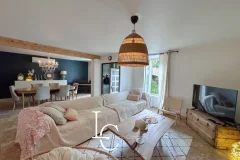Nord Pas de Calais Description and Information
Nord-Pas-de-Calais Départements
Nord-Pas-de-Calais Description
One of the smallest French regions, but with the densest population after Ile de France, Nord-Pas-De-Calais is largely industrialised and 35% of its popluation work in heavy industry, although much of this industry is in decline. Historically, the region has been heavily dependent on coal mines, as well as the iron, steel and metallurgical industries, which employed a high percentage of the work force. Since the mines and many of the plants closed, unemployment has increased, and remains well above the national average. A concerted effort is being made to re-employ these workers by attracting new investment to the area. This includes tax incentives, grants, free enterprise zones, and low-interest loans.
Nord-Pas-De-Calais shares its border with Belgium, therefore there is a strong Flemish influence. Many people still speak Flemish and the locals drink more beer than wine, especially noticable during carnivals or annual fairs. Accessibility to northern European countries is good thanks to excellent rail and road links. There is great accessibility to the UK, via a number of passenger ports and Eurostar at Lille. Over 20 million people pass through Calais each year and it's often scoffed at by those who asssociate it with beer-bellied day-trippers simply stocking up on booze and fags. Most people rush away from the area as soon as they can, without discovering the spectacular 40 km coastline - the Côte d'Opale - between Calais to Boulogne. This coast is at the narrowest stretch of La Manche (the English Channel), the closest to the white cliffs of Dover. Sandy beaches can be found at Sangatte and Wissant and, dig deeper into the countryside, and you'll find lovely woodland, river valleys, market gardens, fine golf courses and pretty villages.
The region's accessibility means that there are many British second home owners. Prices of property in the more attractive areas are driven up because of this, although bargains can still be found. It is more expensive close to coastal areas although not excessive compared with the coasts of other regions.
Only 5% of the work force is employed in agriculture. The main crops are potatoes, chicory, garden peas, and green beans.
Nord-Pas-de-Calais Population
-
Population: 3,996,588
-
Pop.density (people per km2): 322









